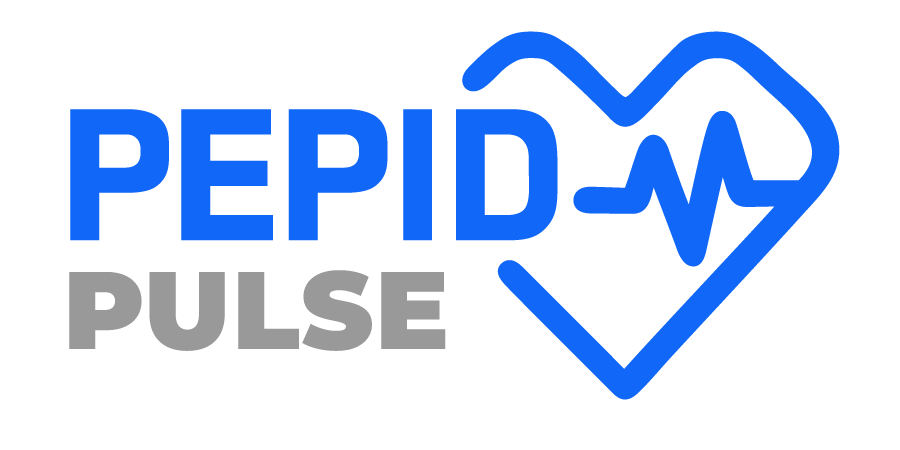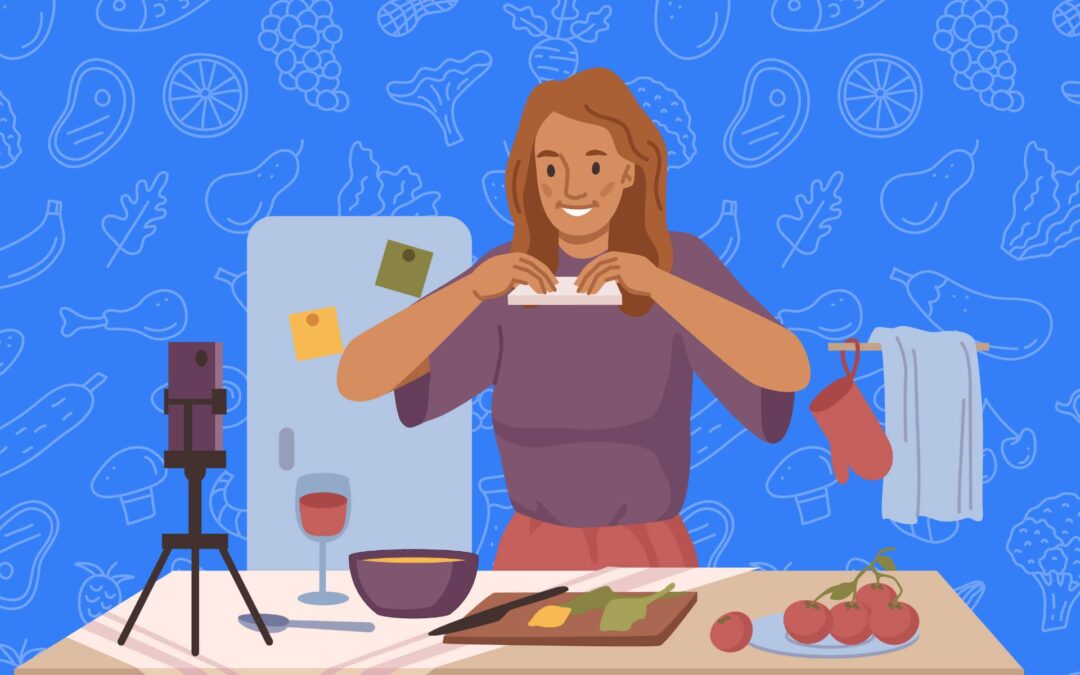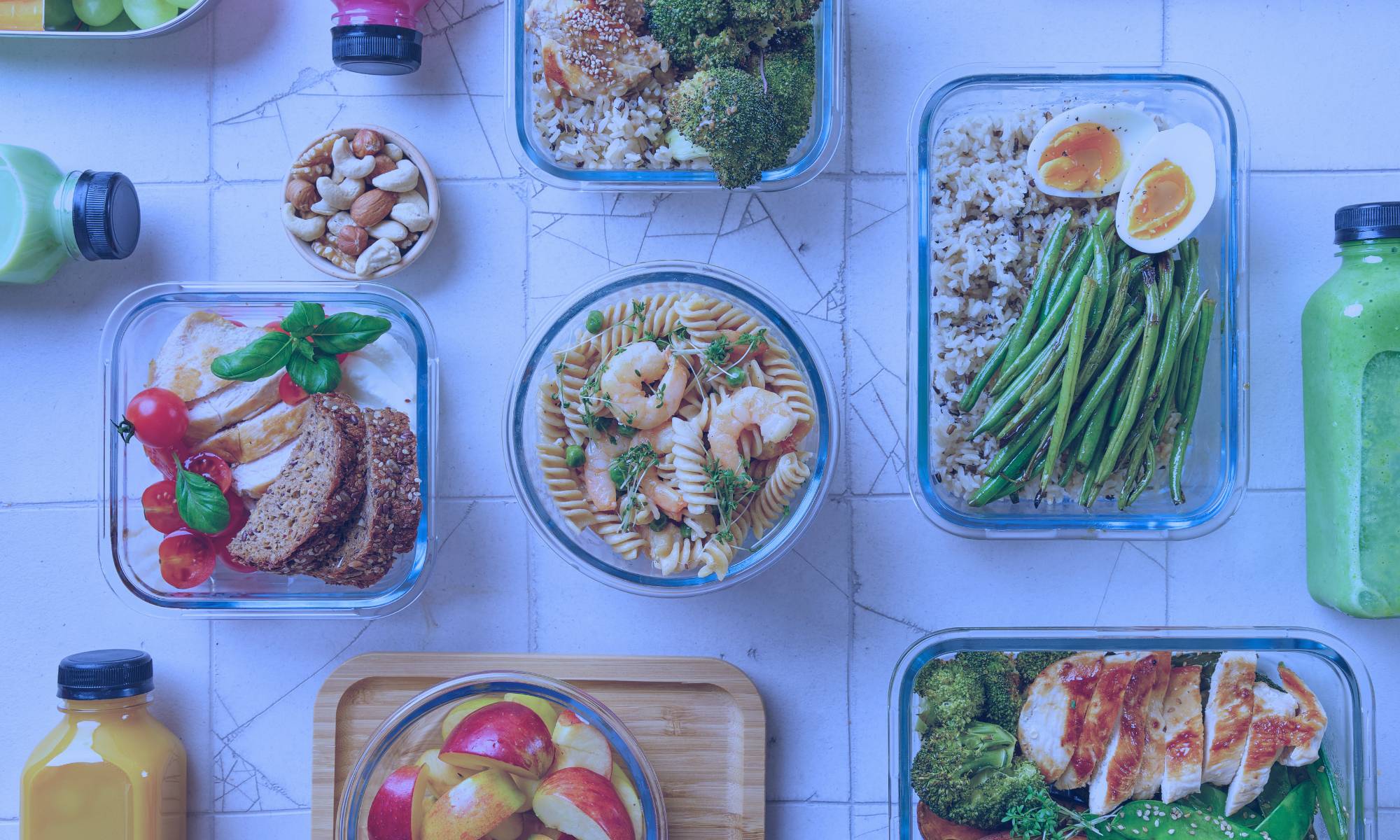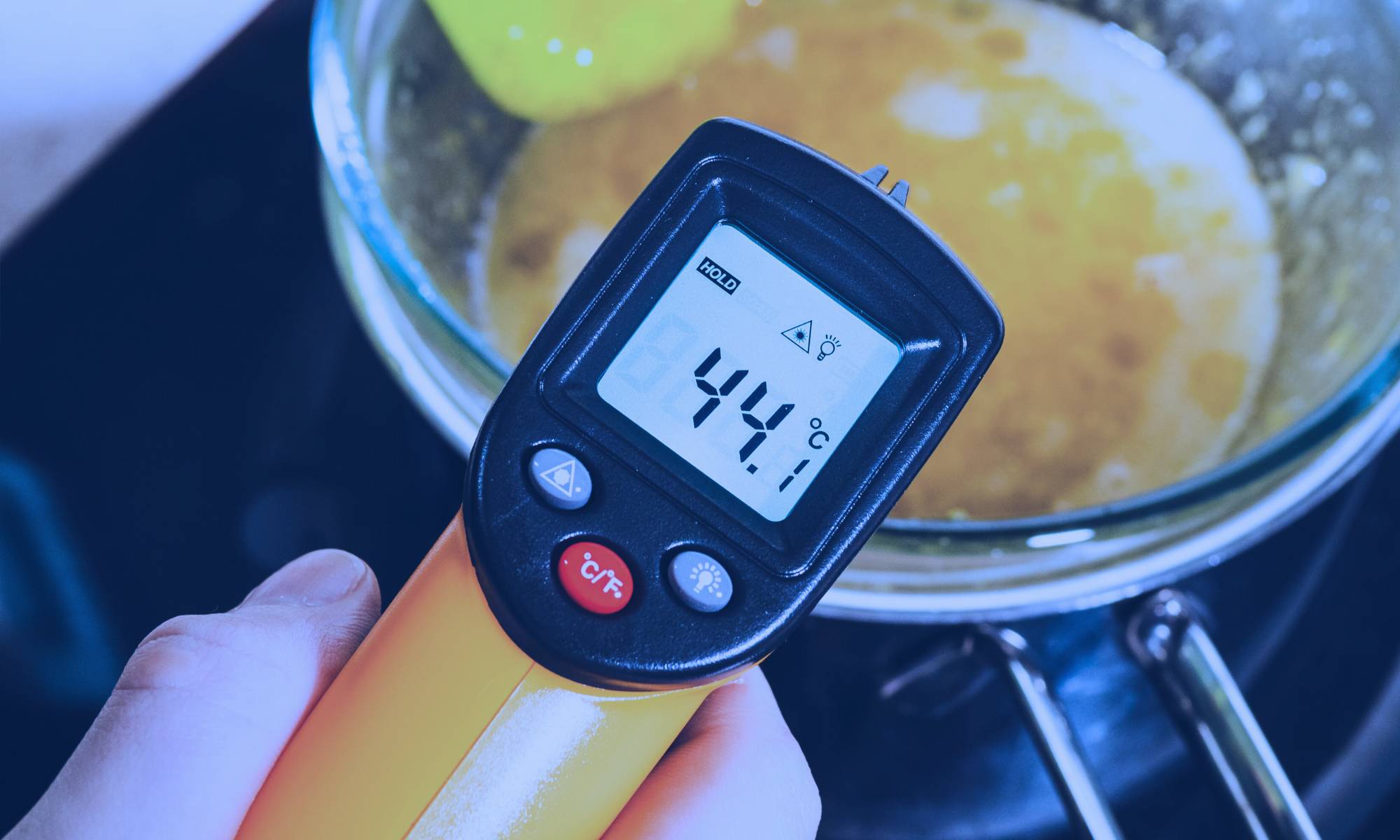Important Nutritional Habits to Explore or Adopt
Meal preparation and the use of a food scale can be effective strategies for promoting healthier eating habits.
As many of us have likely heard, meal preparation and the use of a food scale can be effective strategies for promoting healthier eating habits. There is a lot of truth to this statement, and it should be worthwhile to explore why the advantages and why many people do not follow these methods when preparing their food and meal preparations. We will also cover other useful techniques, such as low-temperature meat cooking and food tracking applications that may be worth trying, if done properly.
Meal Prep: A Game-Changer for Your Diet, Budget, and Well-being
As research has shown, Meal preparation can improve dietary quality as individuals who plan meals in advance are more likely to adhere to national nutritional guidelines1. This study also suggests that meal preparation demonstrates lower odds of being overweight in women and lower odds of obesity in men. Furthermore, evidence from a separate study suggests that more time spent on planning (over an hour a day prepping) is linked to healthier eating habits because of an increased intake of vegetables, salads, and fruits2. While this time commitment may be seemingly infeasible for many people, planning meals and creating a food list that covers a wide variety of food groups can often be done on days off before the coming work week. Moreover, meal preparation is a useful way to save money2, time3, and food waste4. Not only does it alleviate the stress of deciding what to eat5, but it also helps curb impulsive eating tendencies.
The Power of Precision: Enhancing Meal Prep with Accurate Food Measurements
While meal preparation is useful, it can be more effective by incorporating precise measurements. The US Dietary Guidelines provide recommendations in cups and ounces, but estimating food quantities accurately can still be challenging. In fact, it is common for people to underestimate how many calories they consume daily, sometimes by nearly as much as 1,000 calories per day8. Using cups and ounces reduces the accuracy of calorie estimation, for example, a common rule of thumb in the kitchen is that any cut of meat the size of your palm is approximately three ounces9. However, people’s palms vary in size and where one person’s palm could fit three ounces of salmon, another person’s palm may fit six ounces, leading to a difference of about 150 calories in this example.
One study suggests that people who measured their food were more successful at achieving and maintaining weight loss compared to those who did not10.
When preparing meals for the week or even simply cutting up fruits and vegetables, a food scale enables individuals to precisely record the amount of food one has prepared. Even for those who are not actively seeking weight loss or dietary changes, a food scale can serve as a valuable tool to gain insights into their daily calorie consumption.
Exploring the Heat Factor: The Potential Effects of Cooking Temperatures
A potential explanation for why the World Health Organization has considered the consumption of red meat, “probably carcinogenic to humans” is the way the meat is cooked11. This, however, does not just apply to red meats but several other kinds of meats as well. Meat that is grilled, fried, or well done has been shown to increase the risk of several kinds of types of cancers12,13,14. High-temperature cooking of meat, defined as temperatures ranging from 125-300°C or 275-572°F, has been shown to generate heterocyclic amines (HCAs), polycyclic aromatic hydrocarbons (PAHs), and N-nitroso compounds. These food-borne carcinogens may affect the body through consumption and inhalation15,16,17,18,19. Even the National Cancer Institute (NCI) has issued a statement explaining what HCAs and PAHs are and how they are formed. Their statement also shows what potential links these carcinogens may have with increased risk of cancer. Alternatively, they recommend methods that involve low-temperature cooking such as using crock pots, boiling, or sous vides22. If cooking with high-heat techniques, the NCI also provides a small list of techniques that may be useful to help minimize exposure to these carcinogenic compounds.
Your Pocket Nutritionist: The Potential of App-Based Nutrition Services
App-based nutrition services offer valuable tools for estimating calorie intake and identifying macro and micronutrient needs. Studies also show that these app-based nutrition services modestly promote behavior changes toward a healthier diet and increased physical activity levels23,24,25. There is an ever-growing list of nutrition apps available to the general population and they can be used in conjunction with the other techniques previously mentioned to help further monitor and document progress towards one’s nutritional goals.
Depending on one’s goals, a range of nutrition apps are available on the market that cater to different needs. An article published on Healthline outlines a list of several applications that may be useful for different groups of people. While more focus needs to be directed towards these technologies, specifically in improving adherence to recommended dietary interventions that include nutrition applications, there is promising potential in their ability to foster beneficial dietary changes27.
Notable mentions among helpful dietary apps worth adding to your meal preparation routine include Dr. Greger’s Daily Dozen (free), Cronometer (free), Carbon(paid), or RP Diet Coach (paid).
*This is not a sponsored post and PEPID is not affiliated with the companies mentioned in this article or the accuracy of their content.
Embracing a Healthier Future For All
While there is no set formula for making dietary improvements, these four approaches may offer new ways for individuals to experiment with making and sustaining long-term dietary changes. Unfortunately, altering one’s mindset & behavior isn’t easy and can often present a barrier to achieving the desired lasting change. While there are many hurdles in achieving one’s dietary goals, the methods listed above are straightforward and can be embraced by anyone with a smartphone, reasonable access to store-bought food, and low-temperature cooking options. It is recommended that before implementing these changes, patients consult with their physician or a registered dietician to ensure these changes are made properly and effectively to promote a healthy dietary plan.
References
1. Ducrot P, Méjean C, Aroumougame V, et al. Meal planning is associated with food variety, diet quality and body weight status in a large sample of French adults. International Journal of Behavioral Nutrition and Physical Activity. 2017;14(1). doi:10.1186/s12966-017-0461-7
2. Monsivais P, Aggarwal A, Drewnowski A. Time Spent on Home Food Preparation and Indicators of Healthy Eating. American Journal of Preventive Medicine. 2014;47(6):796-802. doi:10.1016/j.amepre.2014.07.033
3. Escoto KH, Laska MN, Larson N, Neumark-Sztainer D, Hannan PJ. Work Hours and Perceived Time Barriers to Healthful Eating Among Young Adults. American Journal of Health Behavior. 2012;36(6):786-796. doi:10.5993/ajhb.36.6.6
4. Du Y, Rong S, Sun Y, et al. Association Between Frequency of Eating Away-From-Home Meals and Risk of All-Cause and Cause-Specific Mortality. Journal of the Academy of Nutrition and Dietetics. 2021;0(0). doi:10.1016/j.jand.2021.01.012
5. Widener MJ, Ren L, Astbury CC, Smith LG, Penney TL. An exploration of how meal preparation activities relate to self-rated time pressure, stress, and health in Canada: A time use approach. SSM – Population Health. 2021;15:100818. doi:10.1016/j.ssmph.2021.100818
6. Kubala J. 13 Ways to Prevent Stress Eating When You’re Stuck at Home. Healthline. Published March 27, 2020. Accessed April 6, 2022. https://www.healthline.com/nutrition/ways-to-prevent-stress-eating-when-youre-stuck-at-home#5.-Bring-out-your-inner-chef
7. Blanton K. 8 Scientific Benefits of Meal Prepping. EverydayHealth.com. Accessed April 6, 2022. https://www.everydayhealth.com/diet-nutrition/scientific-benefits-of-meal-prepping/
Webb GP. Nutrition: Maintaining and Improving Health. 5th ed. Crc Press, Taylor & Francis Group; 2020.
8. Vann M. A Food Scale — Your Best Diet Tool. EverydayHealth.com. Accessed April 6, 2022. https://www.everydayhealth.com/weight/food-scale-for-weight-loss.aspx
9. Stuckey HL, Boan J, Kraschnewski JL, Miller-Day M, Lehman EB, Sciamanna CN. Using Positive Deviance for Determining Successful Weight-Control Practices. Qualitative Health Research. 2010;21(4):563-579. doi:10.1177/1049732310386623
10. Bouvard V, Loomis D, Guyton KZ, et al. Carcinogenicity of consumption of red and processed meat. The Lancet Oncology. 2015;16(16):1599-1600. doi:10.1016/s1470-2045(15)00444-1
11. Zheng W, Lee SA. Well-Done Meat Intake, Heterocyclic Amine Exposure, and Cancer Risk. Nutrition and Cancer. 2009;61(4):437-446. doi:10.1080/01635580802710741
12. Melkonian SC, Daniel CR, Ye Y, et al. Gene-environment interaction of genome-wide association study-identified susceptibility loci and meat-cooking mutagens in the etiology of renal cell carcinoma. Cancer. 2015;122(1):108-115. doi:10.1002/cncr.29543
13. Sinha R, Peters U, Cross AJ, Kulldorff M, Weissfeld JL, Pinsky PF, Rothman N, Hayes RB. Meat, meat cooking methods and preservation, and risk for colorectal adenoma. Cancer Res. 2005;65(17):8034-8041. doi:1410.1158/0008-5472.CAN-04-3429
14. Lijinsky W. N-Nitroso compounds in the diet. Mutation Research/Genetic Toxicology and Environmental Mutagenesis. 1999;443(1-2):129-138. doi:10.1016/s1383-5742(99)00015-0
15. Thiébaud HP, Knize MG, Kuzmicky PA, Hsieh DP, Felton JS. Airborne mutagens produced by frying beef, pork and a soy-based food. Food and Chemical Toxicology. 1995;33(10):821-828. doi:10.1016/0278-6915(95)00057-9
16. Chen JW, Wang SL, Hsieh DPH, Yang HH, Lee HL. Carcinogenic potencies of polycyclic aromatic hydrocarbons for back-door neighbors of restaurants with cooking emissions. Science of The Total Environment. 2012;417-418:68-75. doi:10.1016/j.scitotenv.2011.12.012
17. Skog KI, Johansson MAE, Jägerstad MI. Carcinogenic Heterocyclic Amines in Model Systems and Cooked Foods: A Review on Formation, Occurrence and Intake. Food and Chemical Toxicology. 1998;36(9-10):879-896. doi:10.1016/s0278-6915(98)00061-1
18. Lauber SN, Ali S, Gooderham NJ. The cooked food derived carcinogen 2-amino-1-methyl-6-phenylimidazo[4,5-b] pyridine is a potent oestrogen: a mechanistic basis for its tissue-specific carcinogenicity. Carcinogenesis. 2004;25(12):2509-2517. doi:10.1093/carcin/bgh268
19. National Cancer Institute. Chemicals in Meat Cooked at High Temperatures and Cancer Risk. Cancer.gov. Published 2015. https://www.cancer.gov/about-cancer/causes-prevention/risk/diet/cooked-meats-fact-sheet
20. Gunnars K. How to Make Your Meat as Healthy as Possible. Healthline. Published February 16, 2018. Accessed April 6, 2022. https://www.healthline.com/nutrition/how-to-make-your-meat-as-healthy-as-possible#TOC_TITLE_HDR_3
21. Greger M, Stone G. How Not to Die : Discover the Foods Scientifically Proven to Prevent and Reverse Disease. Pan Books; 2018.
22. Schoeppe S, Alley S, Van Lippevelde W, et al. Efficacy of interventions that use apps to improve diet, physical activity and sedentary behaviour: a systematic review. International Journal of Behavioral Nutrition and Physical Activity. 2016;13(1). doi:10.1186/s12966-016-0454-y
23. Ferrara G, Kim J, Lin S, Hua J, Seto E. A Focused Review of Smartphone Diet-Tracking Apps: Usability, Functionality, Coherence With Behavior Change Theory, and Comparative Validity of Nutrient Intake and Energy Estimates. JMIR mHealth and uHealth. 2019;7(5):e9232. doi:10.2196/mhealth.9232
24. Cade JE. Measuring diet in the 21st century: use of new technologies. Proceedings of the Nutrition Society. 2016;76(3):276-282. doi:10.1017/s0029665116002883
25. Link R. Best Nutrition Apps. Healthline. Published January 16, 2022. Accessed April 6, 2022. https://www.healthline.com/nutrition/top-iphone-android-apps#Our-picks-of-the-best-nutrition-apps
26. Lunde P, Nilsson BB, Bergland A, Kværner KJ, Bye A. The Effectiveness of Smartphone Apps for Lifestyle Improvement in Noncommunicable Diseases: Systematic Review and Meta-Analyses. Journal of Medical Internet Research. 2018;20(5):e162. doi:10.2196/jmir.9751
27. Berger K. Teaching Patients About Healthy Lifestyle Behaviors: Communication is the First Step. Executive and Continuing Professional Education. Published September 27, 2017. https://www.hsph.harvard.edu/ecpe/teaching-patients-about-healthy-lifestyle-behaviors-communication-is-the-first-step/




